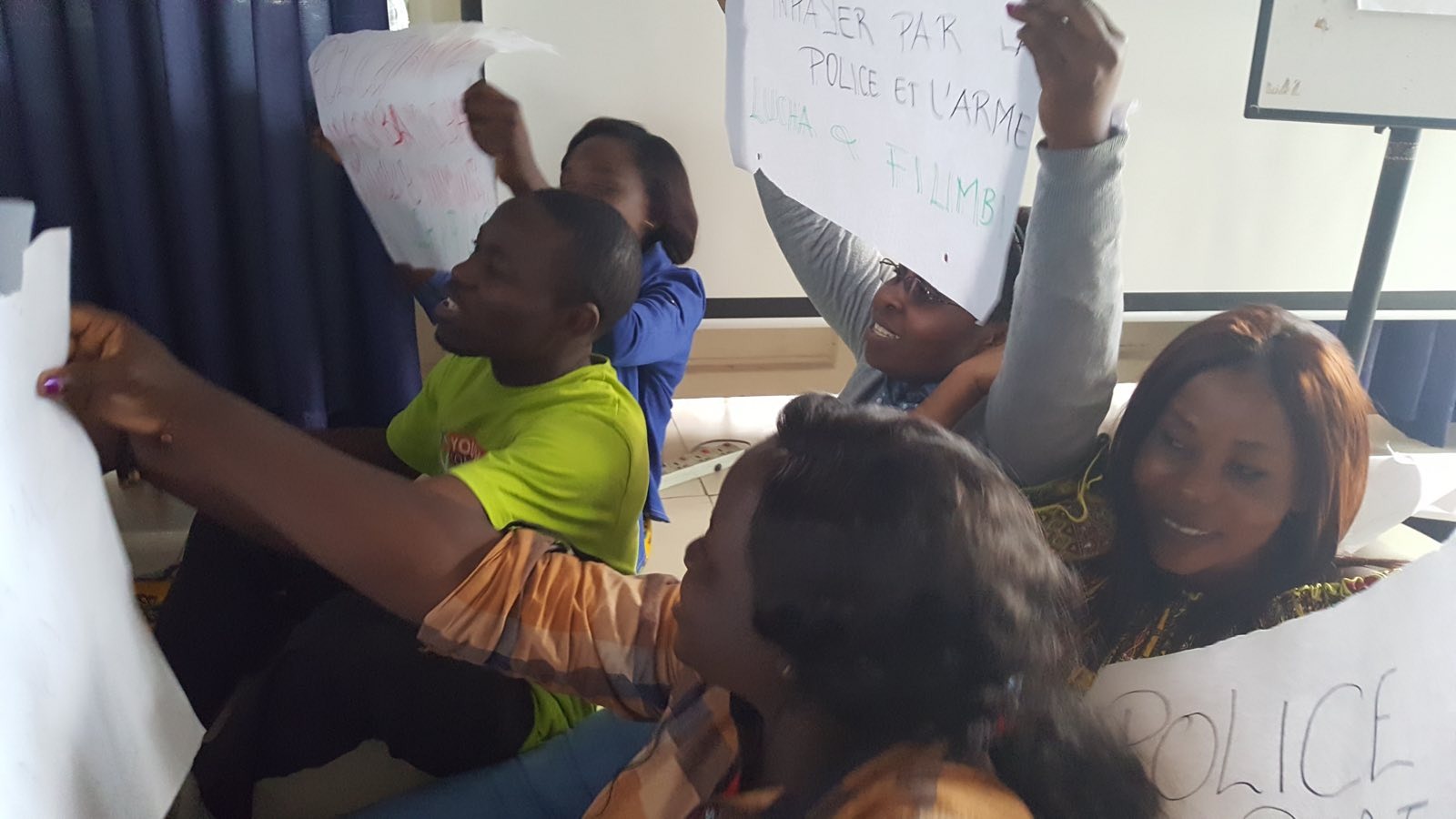|
OBJECTIVE |
To create a security plan on-the-spot for the situation |
|
TIMING |
160 minutes |
|
MATERIALS NEEDED |
Flip charts & marker pens |
When planning and facilitating this session, it is important to consistently apply an intersectional lens to each participant's identity and experiences, and their protection needs. Overlapping systems of discrimination and privilege, such as gender, sexual orientation, religion, disability, racial and/or ethnic origin, economic status/class, marital status, citizenship, age and physical appearance, can have a profound impact on human rights defenders' and their communities' perception of and experience with risks and protection.
Although of course it is stressful, carrying out a workshop in a high-risk environment also lends itself as a great case study from which to draw out the general principles of protection planning.
This session is appropriate for the beginning of a training, after check-ins and participants getting to know each other.

Introduction, recognition and creating space (30 mins)
Be open about the security situation with participants if possible. Explain that protection is central to the training, and measures will need to be taken to ensure that all can stay safe for the duration, and following the workshop.
If it is not already obvious, ask participants to describe the general risk situation and/or update them on what has happened.
Ask participants to share what feelings the situation creates in them – fear, anger, frustration? Make space for this early, and encourage sharing. Create space for this at the beginning of every day as well, so that the psychological impact of the situation is given “room to breathe”.
Once participants have shared and sufficient space has been given, tell participants that now, together, you will make a plan so that you can confront the situation and stay safe and well for the duration of the training and afterwards.
Explain the steps you will follow collectively in order to come to an effective security plan:
- Setting objectives for safety and well-being
- Gathering information or “intelligence”
- Analysing risk
- Making a security plan
- Evaluating the plan
Set objectives → Information gathering → Risk analysis → Security planning → Evaluation
Setting objectives (15 mins)
Begin with objectives: ask participants to think of what specific objectives related to protection and well-being need to be achieved during the training. These could include:
- Ensuring physical protection / freedom from harassment during the training
- Ensuring the training is not interrupted
- Limiting any surveillance and protecting sensitive information
- Managing fear and stress, being well or enjoying ourselves despite the situation.
Gathering information (15 mins)
Once there is broad consensus on the objectives, move to the second step and discuss: what have we observed already, or what do we know already, which could point to a risk to these objectives? Examples might include:
- There are police or others observing the training
- The staff at the hotel are hostile to some participants or the event as a whole
- There are incidents of homophobia/racism/sexual violence etc documented in the area
… you may want to write these up on a flipchart, or just let them be said.
Establishing risks and making a security plan (60 mins)
Divide participants into groups of 3-5 people. Give each group “custodianship” of objectives which are related, and give them the task of:
- identifying concretely what the risks are to those objectives for the duration of the training
- coming up with proposals of security measures for the whole group in order to lower the risk and the impact.
Encourage participants to think about the aspects of well-being, information security/digital security, and physical security when carrying out the exercise. You can introduce the step of identifying capacities and vulnerabilities before, during, or after this exercise, but try not to overload the participants with too many new concepts at this stage.
Give participants 20-40 minutes to work on identifying risks and measures on two separate flip charts per group.
Allow participants to then make their proposals to the group and facilitate a consensus-based process of adopting the measures to be taken.
Evaluation and ongoing analysis (30 mins)
Now that an initial plan is made, it will need to be evaluated regularly. Suggest that this be the first item on the agenda each morning, or after a morning check-in about how everyone is feeling.
Furthermore, security incidents will have to be shared and collectively analysed. Encourage group members to establish a secure communications group if it is not already in place, and to share any observations they think may be relevant to the security of the group regularly during and outside of training hours.
Finally, establish emergency contacts if not already done, in case anything particularly impactful happens, and delegate responsibilities amongst the facilitation team.
Further important notes
At the beginning of each day, it is important to create a space where participants can share any further security incidents, and evaluate whether the security practices are working or any unintentional side-effects have occurred. Furthermore, it is very important to create a space for participants to share about the emotional impact of the situation, give it space, name it and recognise it, and allow for discussions about anything that could be done to confront or mitigate this.
Created by: Daniel Ó Cluanaigh
